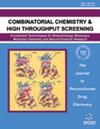Exploring Asthma Mechanism of Belamcanda Chinensis by “Dose–effect Weighted Coefficient” Network Pharmacology and Experiment Validation
IF 1.6
4区 医学
Q4 BIOCHEMICAL RESEARCH METHODS
Combinatorial chemistry & high throughput screening
Pub Date : 2023-11-30
DOI:10.2174/0113862073254607231107074015
引用次数: 0
Abstract
Background:: Asthma is a chronic inflammatory disease of the airways that seriously endangers human health. Belamcanda chinensis (BC), a traditional Chinese medicine, has been used to counteract asthma as it has been shown to possess anti-inflammatory and regulatory immunity properties. Objective:: The study aimed to investigate the mechanisms of action of BC in the treatment of asthma; a “dose–effect weighted coefficient” network pharmacology method was established to predict potential active compounds. Methods:: Information on the components and content of BC was obtained by UPLC-QEOrbitrap- MS spectrometry. Based on BC content, oral bioavailability, and molecular docking binding energy, dose-effect weighting coefficients were constructed. With the degree greater than average as the index, a protein–protein interaction (PPI) database was used to obtain the core key targets for asthma under dose–effect weighting. GO function and KEGG pathway analyses of the core targets were performed using DAVID software. Finally, MTT and ELISA assays were used to assess the effects of active components on 16HBE cell proliferation. Results:: The experimental results using the 16HBE model demonstrated BC to have a potential protective effect on asthma. Network pharmacology showed SYK, AKT1, and ALOX5 to be the main key targets, and Fc epsilon RI as the promising signaling pathway. Eight components, such as tectoridin, mangiferin, luteolin, and isovitexin were the main active compounds, Finally, we analyzed the LPS-induced 16HBE proliferation of each active ingredient. Based on the activity verification study, all five predicted components promoted the proliferation of 16HBE cells. These five compounds can be used as potential quality markers for asthma. Conclusion:: This study provides a virtual and practical method for the simple and rapid screening of active ingredients in natural products.“剂量效应加权系数”网络药理学及实验验证探讨中华白桦哮喘作用机制
背景:哮喘是一种严重危害人体健康的气道慢性炎症性疾病。白桦(Belamcanda chinensis, BC)是一种传统中药,已被用于对抗哮喘,因为它已被证明具有抗炎和调节免疫特性。目的:探讨BC治疗哮喘的作用机制;建立了“剂量效应加权系数”网络药理学方法预测潜在活性成分。方法:采用UPLC-QEOrbitrap- MS谱法测定BC的成分和含量。基于BC含量、口服生物利用度和分子对接结合能,构建剂量效应权重系数。以大于平均值的程度为指标,利用蛋白-蛋白相互作用(PPI)数据库,获得剂量效应加权下哮喘的核心关键靶点。使用DAVID软件对核心靶点进行GO函数和KEGG通路分析。最后,采用MTT和ELISA法评估活性成分对16HBE细胞增殖的影响。结果:16HBE模型的实验结果表明,BC对哮喘有潜在的保护作用。网络药理学显示SYK、AKT1和ALOX5是主要的关键靶点,Fc epsilon RI是有希望的信号通路。以鸢尾草苷、芒果苷、木犀草素和异牡荆素为主要活性成分,最后分析了各活性成分对lps诱导的16HBE增殖的影响。基于活性验证研究,这五种预测成分都促进了16HBE细胞的增殖。这五种化合物可作为潜在的哮喘质量标记物。结论:本研究为天然产品中有效成分的快速筛选提供了一种虚拟实用的方法。
本文章由计算机程序翻译,如有差异,请以英文原文为准。
求助全文
约1分钟内获得全文
求助全文
来源期刊
CiteScore
3.10
自引率
5.60%
发文量
327
审稿时长
7.5 months
期刊介绍:
Combinatorial Chemistry & High Throughput Screening (CCHTS) publishes full length original research articles and reviews/mini-reviews dealing with various topics related to chemical biology (High Throughput Screening, Combinatorial Chemistry, Chemoinformatics, Laboratory Automation and Compound management) in advancing drug discovery research. Original research articles and reviews in the following areas are of special interest to the readers of this journal:
Target identification and validation
Assay design, development, miniaturization and comparison
High throughput/high content/in silico screening and associated technologies
Label-free detection technologies and applications
Stem cell technologies
Biomarkers
ADMET/PK/PD methodologies and screening
Probe discovery and development, hit to lead optimization
Combinatorial chemistry (e.g. small molecules, peptide, nucleic acid or phage display libraries)
Chemical library design and chemical diversity
Chemo/bio-informatics, data mining
Compound management
Pharmacognosy
Natural Products Research (Chemistry, Biology and Pharmacology of Natural Products)
Natural Product Analytical Studies
Bipharmaceutical studies of Natural products
Drug repurposing
Data management and statistical analysis
Laboratory automation, robotics, microfluidics, signal detection technologies
Current & Future Institutional Research Profile
Technology transfer, legal and licensing issues
Patents.

 求助内容:
求助内容: 应助结果提醒方式:
应助结果提醒方式:


